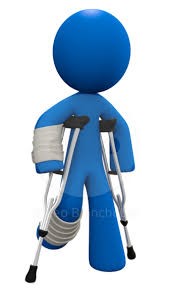 Make a Big Impact in Lowering Workers’ Comp Litigation
Make a Big Impact in Lowering Workers’ Comp Litigation
By Kimberly Daise
Use the Dispute resolution option and stop litigating. Use an Alternative dispute resolution program. ADR programs are designed to eliminate litigation by negotiating workers’ compensation benefits and the dispute resolution process between the employer and its unions.
While the unions appear not to be encouraging litigation, a large number of employees still retained the services of an attorney.
Why? Many employees indicate they get an attorney because they had not been contacted by their frontline employer supervisor. The employee is usually worried about their status within the company and their job.
This can be resolved by implementing a program within the business that requires the supervisors to have a consistent and repeated person to person contact with the employee.
Supervisors do not realize the profound positive impact they can have on their employees. Many supervisors do not remain in contact with injured employees because the workers’ compensation claims administration process is not designed to encourage that interaction. additionally, some supervisors are and can be uncomfortable trying to discuss a complex system. Employers supervisors may also be unsure of what they are allowed to discuss with the employee. This apprehension is related to the concern for medical privacy. Even if these matters are not discussed the contacted injured employee will likely feel that the employer cares and that they will be looked after. The employer has a vested interest in not only the company but their well-being as well.
Based on an ADR program study, employers can help reduce their litigation rate if they encourage their frontline supervisors to remain in contact with employees after an industrial accident and coach them on appropriate interaction.
The most important aspect of the process is to send the message that the employee is valued, respected, and wanted back at work. Supervisors do not have to be workers’ compensation experts. A supervisor should convey a sense of care and a willingness to keep the employee connected to their team.
Frontline supervisors may inquire with statements like these:
1. How are you feeling?
2. We miss you and the good work you do!
3. We are having our birthday; if you can attend we would love to see you. Do you feel up to coming by?
4. If you have any concerns please call me and let me know If I cannot help you I will find a person who can?
Remember the smallest gestures can make the biggest impact. Don’t forget to show injured or ill employees how much caring counts throughout the recovery and return to work process.





 What are
What are

